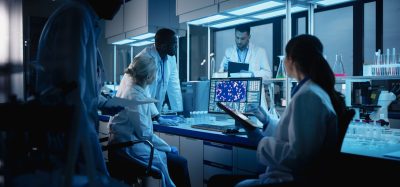Microtitration assay developed to detect Ebola virus in vitro
Posted: 24 May 2021 | Victoria Rees (Drug Target Review) | No comments yet
Researchers have successfully created an unbiased, high-throughput microtitration assay for the quantification of Ebola virus in cell lines.


In a new study, researchers have utilised a recently developed Ebola-specific reporter cell line that expresses ZsGreen in response to Ebola virus infection, in conjunction with semi-automated processing and quantification techniques, to develop an unbiased, high-throughput microtitration assay for quantification of infectious Ebola virus in vitro. The assay was developed by researchers at the US National Biodefense Analysis and Countermeasures Center and George Mason University, US.
“The goal of the present study was to capitalise on the specificity and sensitivity afforded by this Ebola reporter cell line, while increasing the throughput of the assay to facilitate its implementation in subsequent studies,” the authors of the study write.
According to the scientists, a variety of methods have been developed for quantification of infectious Ebola virus in clinical or laboratory samples, but existing methods often require extensive operator involvement, manual assay scoring or the use of custom reagents.
Biomarkers are redefining how precision therapies are discovered, validated and delivered.
This exclusive expert-led report reveals how leading teams are using biomarker science to drive faster insights, cleaner data and more targeted treatments – from discovery to diagnostics.
Inside the report:
- How leading organisations are reshaping strategy with biomarker-led approaches
- Better tools for real-time decision-making – turning complex data into faster insights
- Global standardisation and assay sensitivity – what it takes to scale across networks
Discover how biomarker science is addressing the biggest hurdles in drug discovery, translational research and precision medicine – access your free copy today
The new assay was found to have equivalent sensitivity to a standardised plaque assay for quantifying viral titres. However, the team say the novel assay could be implemented with fewer reagents and processing steps, reduced subjectivity and higher throughput.
The researchers claim that this assay may be useful for a variety of applications, particularly studies that require the detection or quantification of infectious Ebola virus in large numbers of samples.
“By automating the dilution and read-out steps of the assay, operator involvement and subjectivity were minimised and throughput was improved,” the authors write. “This assay was compared with a plaque assay developed by FANG for quantification of filovirus virus titres. When the microtitration assay results were adjusted for the difference in units between TCID50 and PFU, the titres determined by the microtitration assay on Vero-Ebola-reporter cells were equivalent to those determined by the FANG plaque assay.”
The study was published in the Journal of Virological Methods.
Related topics
Assays, Cell Cultures, Disease Research, In Vitro
Related conditions
Ebola virus
Related organisations
George Mason University, US National Biodefense Analysis and Countermeasures Center








